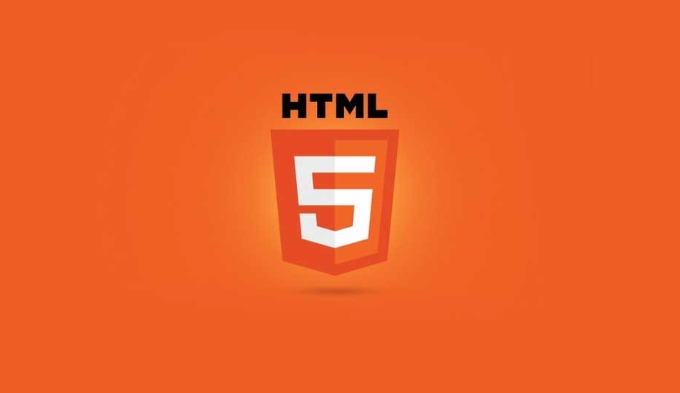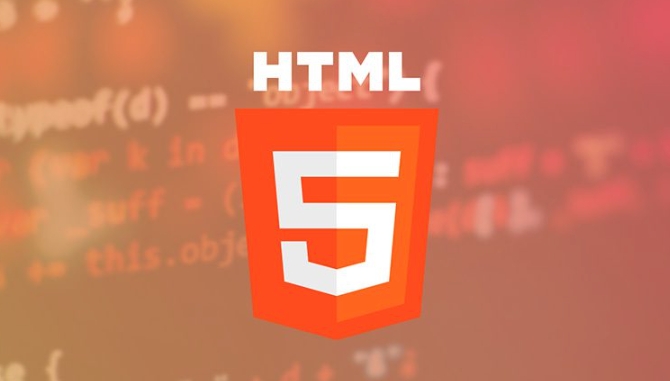Receiving real-time data with HTML5 Server-Sent Events (SSE).
Jul 02, 2025 pm 04:46 PMServer-Sent Events (SSE) is a lightweight solution provided by HTML5 to push real-time updates to the browser. It realizes one-way communication through long HTTP connections, which is suitable for stock market, notifications and other scenarios. When using it, create an EventSource instance and listen for messages: const eventSource = new EventSource('/stream'); eventSource.onmessage = function(event) { console.log('Received message:', event.data); }; The server needs to set Content-Type to text/event-stream, keep the connection open, and output data: content\n\n in the format. Common considerations include: 1. Configure CORS to solve cross-domain problems; 2. Control retry time to achieve automatic reconnection; 3. Use event: Define custom event types; 4. Manage connection timeout to prevent resource leakage. Compared with WebSocket, SSE is simpler and easier to use, supports HTTP protocol to penetrate the firewall, but is only unidirectional communication and has slightly poor compatibility. It is suitable for real-time push scenarios without frequent interactions.

In web development, if you need to push real-time updates from the server to the browser, HTML5 provides a lightweight solution: Server-Sent Events (SSE). Compared with WebSocket, it is simpler and easier to implement, and is especially suitable for scenarios where only servers need to communicate one-way to clients.

What are Server-Sent Events?
Server-Sent Events is part of HTML5, allowing servers to push data to the browser over HTTP long connections. Unlike traditional polling methods, SSE will remain open after establishing a connection, and the server can send new data at any time, such as stock quotes, real-time notifications or chat messages.

Its basic usage is to create an EventSource instance and point to a URL on the server side:
const eventSource = new EventSource('/stream');
eventSource.onmessage = function(event) {
console.log('Received message:', event.data);
};As long as the server continues to send data, the client can continue to receive it.

How to set SSE support on the server side?
Different backend languages ??have different implementation methods, but the core point is the same: keep the connection open and output the content in the SSE format.
Take Node.js Express as an example:
app.get('/stream', (req, res) => {
res.setHeader('Content-Type', 'text/event-stream');
res.setHeader('Cache-Control', 'no-cache');
// Simulate sending data setInterval(() => {
res.write(`data: ${new Date()}\n\n`);
}, 1000);
});Key points:
- Set the correct response header, especially
text/event-stream - Don't end the response too early, keep the connection open
- The data format must be
data: 內(nèi)容\n\n, and two newlines indicate the end of a message
Other languages ??such as Python (Flask), PHP, or Java Spring Boot can be implemented similarly.
Frequently Asked Questions and Notes
1. Cross-domain issues If the front-end and back-end are not under the same domain name, CORS needs to be configured to ensure that the request initiated EventSource is allowed:
Access-Control-Allow-Origin: *
Or specify a specific domain name.
2. Automatic reconnect mechanism When the connection is interrupted, the browser will automatically try to reconnect, and the default waiting time is 3 seconds. You can control this interval on the server side:
retry: 5000
3. Custom event type In addition to the default onmessage , you can also define other event names:
event: update
data: {"type": "news", "content": "New news is coming"}Front-end monitoring:
eventSource.addEventListener('update', function(event) {
console.log('Update received:', event.data);
});4. Connection timeout and resource release Be careful not to let the connection hang indefinitely. The server should have mechanisms to detect whether the client is disconnected and release resources in time to avoid memory leakage.
When should I use SSE instead of WebSocket?
WebSocket is more powerful and supports two-way communication, but also has higher complexity. If you only need the server to push information to the client and do not need frequent interactions, SSE is a better choice.
Advantages include:
- Simplify the development process, easy to implement both front and back ends
- Support automatic reconnection
- The standard HTTP protocol can be used to make it easier to penetrate the firewall
The disadvantages are also obvious:
- Only one-way communication from server to client is supported
- Browser compatibility is slightly poor (IE and older versions of Edge are not supported)
Basically that's it. SSE is not complicated, but in actual deployment, you should pay attention to connection management, error handling and performance optimization. If you just want to make a simple real-time notification system, SSE is a lightweight and practical choice.
The above is the detailed content of Receiving real-time data with HTML5 Server-Sent Events (SSE).. For more information, please follow other related articles on the PHP Chinese website!

Hot AI Tools

Undress AI Tool
Undress images for free

Undresser.AI Undress
AI-powered app for creating realistic nude photos

AI Clothes Remover
Online AI tool for removing clothes from photos.

Clothoff.io
AI clothes remover

Video Face Swap
Swap faces in any video effortlessly with our completely free AI face swap tool!

Hot Article

Hot Tools

Notepad++7.3.1
Easy-to-use and free code editor

SublimeText3 Chinese version
Chinese version, very easy to use

Zend Studio 13.0.1
Powerful PHP integrated development environment

Dreamweaver CS6
Visual web development tools

SublimeText3 Mac version
God-level code editing software (SublimeText3)

Hot Topics
 What is Microdata? HTML5 Explained
Jun 10, 2025 am 12:09 AM
What is Microdata? HTML5 Explained
Jun 10, 2025 am 12:09 AM
MicrodataenhancesSEOandcontentdisplayinsearchresultsbyembeddingstructureddataintoHTML.1)Useitemscope,itemtype,anditempropattributestoaddsemanticmeaning.2)ApplyMicrodatatokeycontentlikebooksorproductsforrichsnippets.3)BalanceusagetoavoidclutteringHTML
 HTML5 Microdata: The best online tools
Jun 09, 2025 am 12:06 AM
HTML5 Microdata: The best online tools
Jun 09, 2025 am 12:06 AM
ThebestonlinetoolsforHTML5MicrodataareGoogleStructuredDataMarkupHelperandSchema.org'sMarkupValidator.1)GoogleStructuredDataMarkupHelperisuser-friendly,guidinguserstoaddMicrodatatagsforenhancedSEO.2)Schema.org'sMarkupValidatorchecksMicrodataimplementa
 Microdata in HTML5: The Key to Better Search Engine Ranking
Jun 12, 2025 am 10:22 AM
Microdata in HTML5: The Key to Better Search Engine Ranking
Jun 12, 2025 am 10:22 AM
MicrodatasignificantlyimprovesSEObyenhancingsearchengineunderstandingandrankingofwebpages.1)ItaddssemanticmeaningtoHTML,aidingbetterindexing.2)Itenablesrichsnippets,increasingclick-throughrates.3)UsecorrectSchema.orgvocabularyandkeepitupdated.4)Valid
 Handling reconnections and errors with HTML5 Server-Sent Events.
Jul 03, 2025 am 02:28 AM
Handling reconnections and errors with HTML5 Server-Sent Events.
Jul 03, 2025 am 02:28 AM
When using HTML5SSE, the methods to deal with reconnection and errors include: 1. Understand the default reconnection mechanism. EventSource retrys 3 seconds after the connection is interrupted by default. You can customize the interval through the retry field; 2. Listen to the error event to deal with connection failure or parsing errors, distinguish error types and execute corresponding logic, such as network problems relying on automatic reconnection, server errors manually delay reconnection, and authentication failure refresh token; 3. Actively control the reconnection logic, such as manually closing and rebuilding the connection, setting the maximum number of retry times, combining navigator.onLine to judge network status to optimize the retry strategy. These measures can improve application stability and user experience.
 What are the key features introduced in HTML5?
Jun 19, 2025 pm 11:57 PM
What are the key features introduced in HTML5?
Jun 19, 2025 pm 11:57 PM
HTML5introducedkeyfeaturesthattransformedwebdevelopment.1.Semanticelementslike,,andimprovedstructure,readability,andaccessibility.2.Nativemultimediasupportviaandtagseliminatedrelianceonplugins.3.Enhancedformcontrolsincludingtype="email"andr
 HTML5 Input types: does it improve accessibility?
Jun 20, 2025 am 12:49 AM
HTML5 Input types: does it improve accessibility?
Jun 20, 2025 am 12:49 AM
Yes,HTML5inputtypesimproveaccessibilitybyprovidingsemanticmeaningtoassistivetechnologies.1)Emailinputtypeoptimizeskeyboarddisplayandscreenreaderannouncements.2)Dateinputtypeoffersacalendarwidget,aidinguserswithmotordisabilitiesandensuringconsistentda
 Integrating CSS and JavaScript effectively with HTML5 structure.
Jul 12, 2025 am 03:01 AM
Integrating CSS and JavaScript effectively with HTML5 structure.
Jul 12, 2025 am 03:01 AM
HTML5, CSS and JavaScript should be efficiently combined with semantic tags, reasonable loading order and decoupling design. 1. Use HTML5 semantic tags, such as improving structural clarity and maintainability, which is conducive to SEO and barrier-free access; 2. CSS should be placed in, use external files and split by module to avoid inline styles and delayed loading problems; 3. JavaScript is recommended to be introduced in front, and use defer or async to load asynchronously to avoid blocking rendering; 4. Reduce strong dependence between the three, drive behavior through data-* attributes and class name control status, and improve collaboration efficiency through unified naming specifications. These methods can effectively optimize page performance and collaborate with teams.
 How to control HTML5 video and audio playback using JavaScript?
Jun 24, 2025 am 12:38 AM
How to control HTML5 video and audio playback using JavaScript?
Jun 24, 2025 am 12:38 AM
To control HTML5 video and audio playback using JavaScript, master the following key operations to achieve basic control. 1. Start or pause play can be achieved through the .play() and .pause() methods, and it is recommended to trigger through user interaction to be compatible with mobile browsers; 2. Control the volume and set the value from 0 to 1 through the volume attribute, and switch by setting the muted attribute to true or false; 3. Jump to a specific time to play, you can use the currentTime attribute, which supports direct assignment or increase or decrease the current time, and it is recommended to add error handling; 4. Listen to the playback status changes can be achieved through events such as play, pause, ended and timeupdate.






